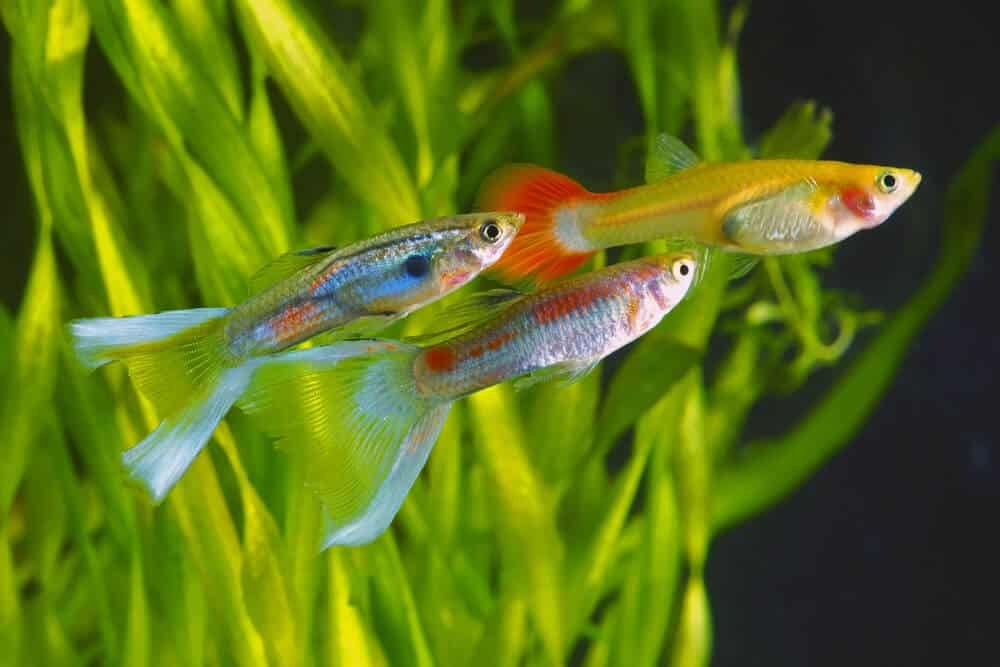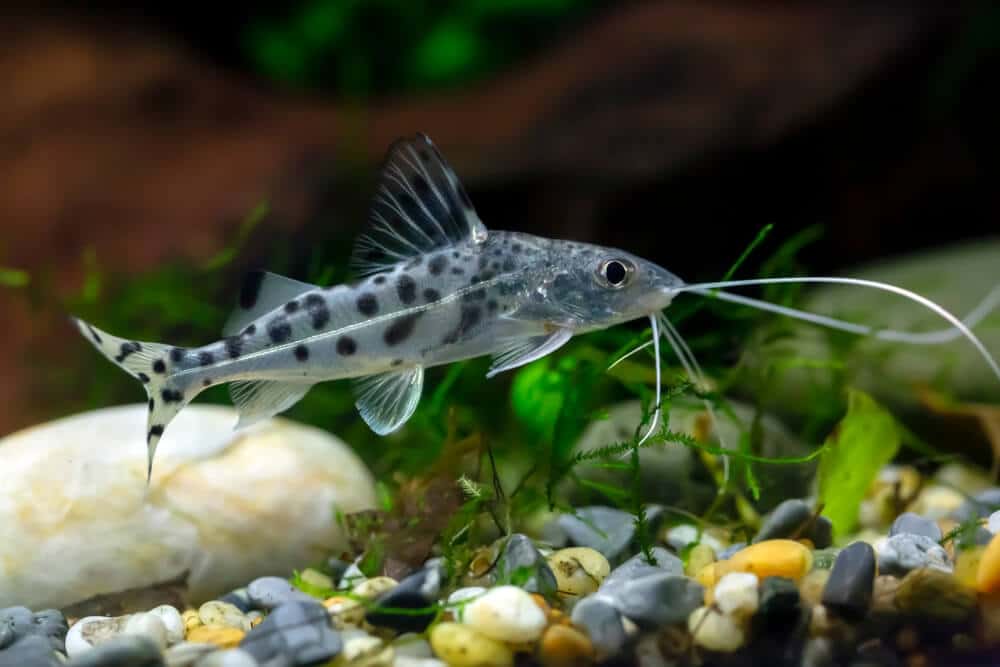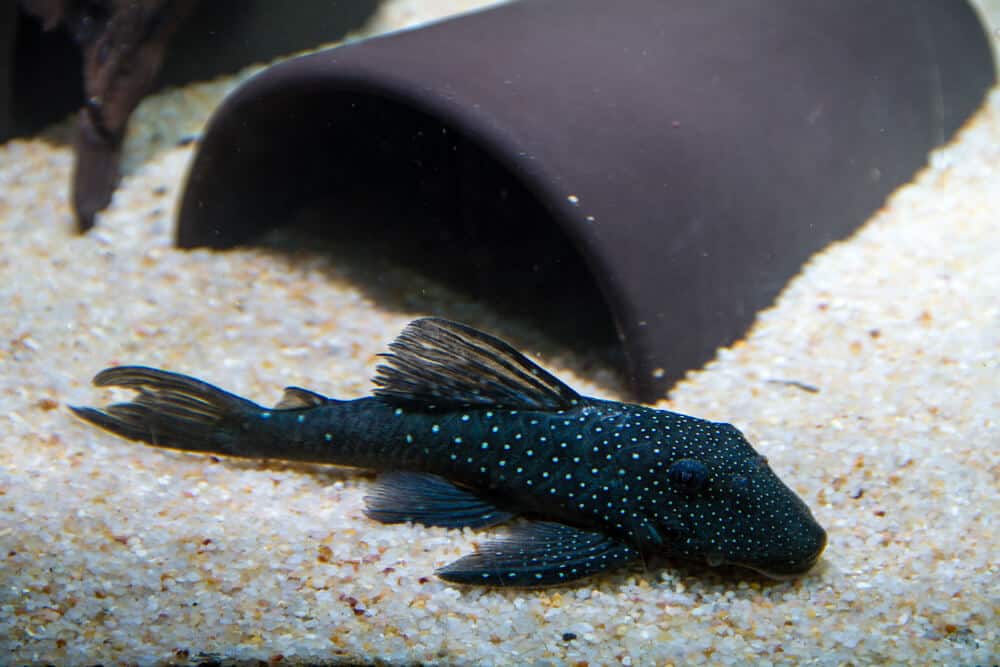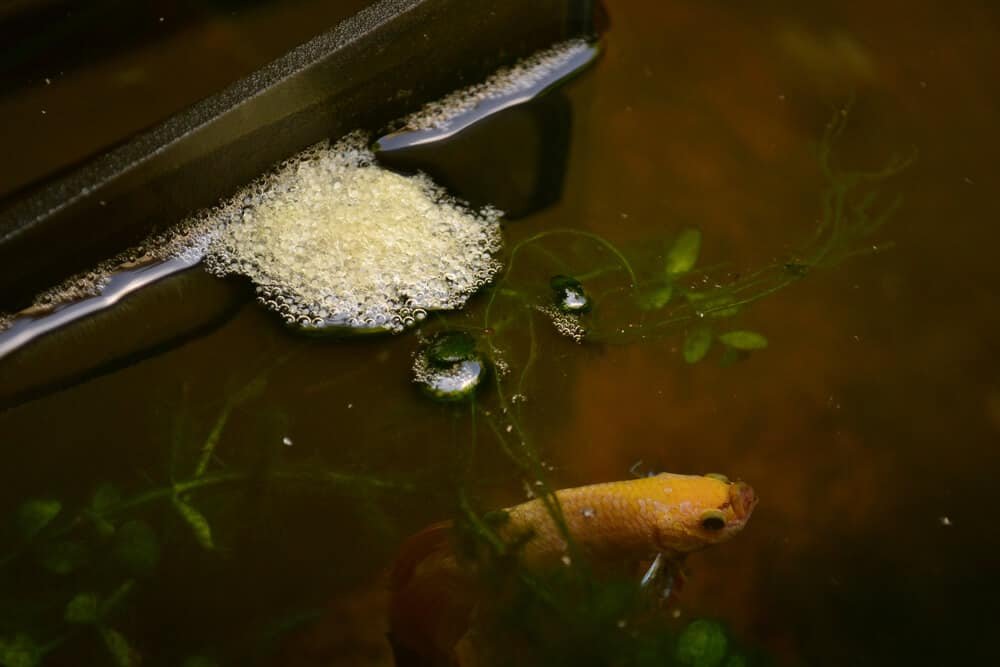Guppies are outgoing fish that appreciates and benefit from the presence of their peers, therefore it is best to keep them in groups of no less than six. This kind of behavior is often known as schooling.
However, many aquarium owners are unaware that guppies are also shoaling fish.
Shoaling means they not only swim together in groups of their own kind but also with fish of their own species.
So, if you’re wondering if different types of guppies school together, the quick answer is YES! The sections below will help you understand more about guppies’ schooling behaviors.
Why Guppies Of Different Kinds School Together
There are approximately 300 species of guppies, each with unique color and pattern variants, and keeping a variety of them is a terrific way to create a more diverse tank.
In fact, keeping guppies in small groups is not recommended.
Despite not always demonstrating schooling and shoaling behavior, guppies are social creatures who prefer to dwell in larger groups.
They will nevertheless engage in shoaling and schooling behaviors when disturbed.
Moreover, they become lonely and sad when left alone, which is why keeping only one guppy is a horrible choice.
The fish may become ill and despondent, which may result in death caused by its weakened immune system.
All in all, the benefit of mixing multiple guppie species is that they all survive within the same water environment.
Despite their variations in appearance, they recognize one another as members of the same species.
Guppies can also be kept with other types of fish, much like in their native environment. Nonetheless, you should proceed with caution and understand that not all fish species get along well.
Guppies will only associate with other species that share their behavioral and habitat preferences.
They prefer water temperatures of less than 82°F and a pH of no more than 7.8. As a result, you must choose tankmates who can adapt to these conditions.
And, if you keep your guppies with larger beings, bad things will happen in your tank. It’s a natural law in nature that bigger creatures will bully or devour smaller fish, hence larger fish may prey on guppies.
If they are not eaten, the guppies will be vulnerable to diseases caused by bullying stress.
Be cautious if you decide to combine your guppies with different fish species for the sake of variety. Even little carnivorous fish can harm guppies if they are starved, which is a risk you do not want to take.
How Many Guppies Can You Keep In A Tank?
Guppies are one of the most hardy fish in the aquarium community and will not break the bank! This is why they are quite tolerant of the mistakes that most beginners make with their very first aquarium.
One of the numerous guppy care questions is how many guppies can be kept in a tank. The answer to this question is that you can keep as many guppies as your tank will allow.
Yes, your tank’s water capacity is the only thing preventing you from keeping as many guppies as you would like. The more water you can add to your tank, the more guppies you may keep, as long as you maintain an adequate fish-to-water ratio.
Another key consideration while keeping several types of guppies in the same tank is to maintain a 2:1 ratio of female to male guppies. Otherwise, male guppies will constantly bother the ladies.
Furthermore, maintaining the ratio is vital not only for the females but additionally for the male guppies. This is due to the fact that female guppies are quite selective when it comes to breeding partners.
When it comes to breeding, different types of guppies can actually mate.
Endler guppies, for example, can breed with fancy guppies, though impregnation is not always effective. Even if the breeding is successful, genetic mutations might stop the new strain from lasting long.
You should also be aware that guppies eat their young immediately. In fact, they provide no care at all after delivery.
Therefore, if you’re looking for a litter of fry, take away the adults from the babies as soon as feasible.
Other Tips On Keeping Different Guppies In A Tank
Less-than-ideal conditions like overcrowding might stress out the guppies and cause sickness down the road. The simplest solution is to provide plenty of hiding spots in your guppy fish tank.
To provide hiding areas for the fish, add live aquatic plants to the guppy fish tank. These additions will enrich the ecosystem, giving your guppies lots of hiding places they can flee to when threatened.
You can also use aquarium decorations such as driftwood and rocks. Such decorations will disrupt the males’ line of sight, distracting their focus and ensuring a tranquil environment for all tank dwellers.
Male guppies of various species may also be more aggressive than the others.
Guppies with such an aggressive personality will assault other fish, including the guppies from their own kind, for no apparent reason. Unfortunately, there is not much you can do to stop them.
You might have to get rid of the aggressor from the space at this point. If you simply cannot provide a healthy and stable environment, you may want to introduce more females into the mix.
If you choose to go this route, however, make sure there are at least two ladies for every male present. Adding too few females to a large group of male guppies will just give them more reasons to fight.
The Takeaway
Guppies are versatile fish that may thrive in captivity. Unfortunately, this characteristic frequently leads to inexperienced guppy owners attempting to gather as many guppies as possible in the same setting for aesthetic reasons.
Regardless of how well they adapt to other species, keep in mind that each guppy requires at least 2 liters of water to stay fit and healthy in the long haul.
Overcrowding will cause a number of problems, such as excessive waste accumulation and high ammonia levels. Male guppies will also exhibit territorial behavior, particularly if there is insufficient water volume.
Because males are very competitive when the breeding phase starts, having two males and one female in a tank is not a smart idea.







